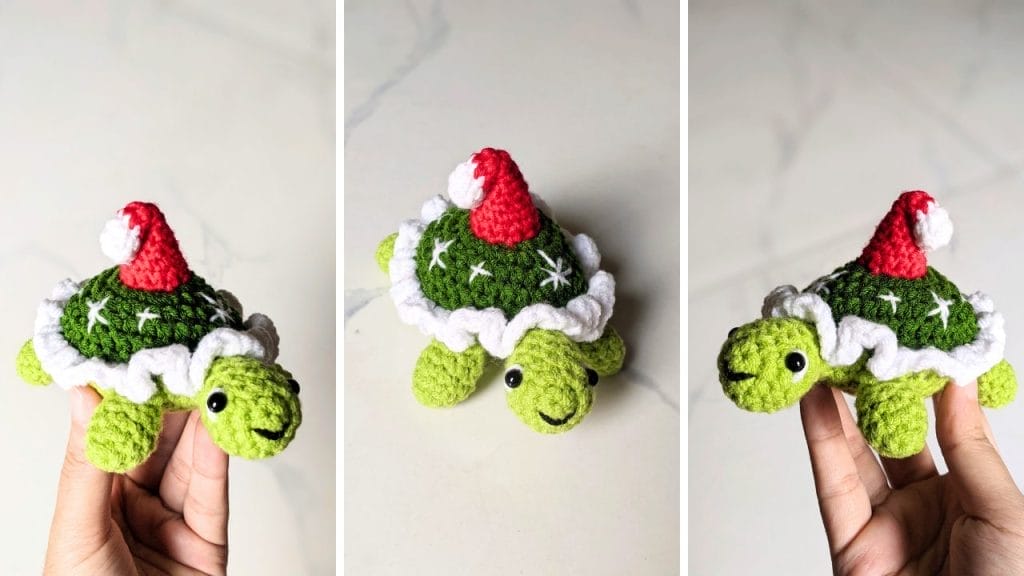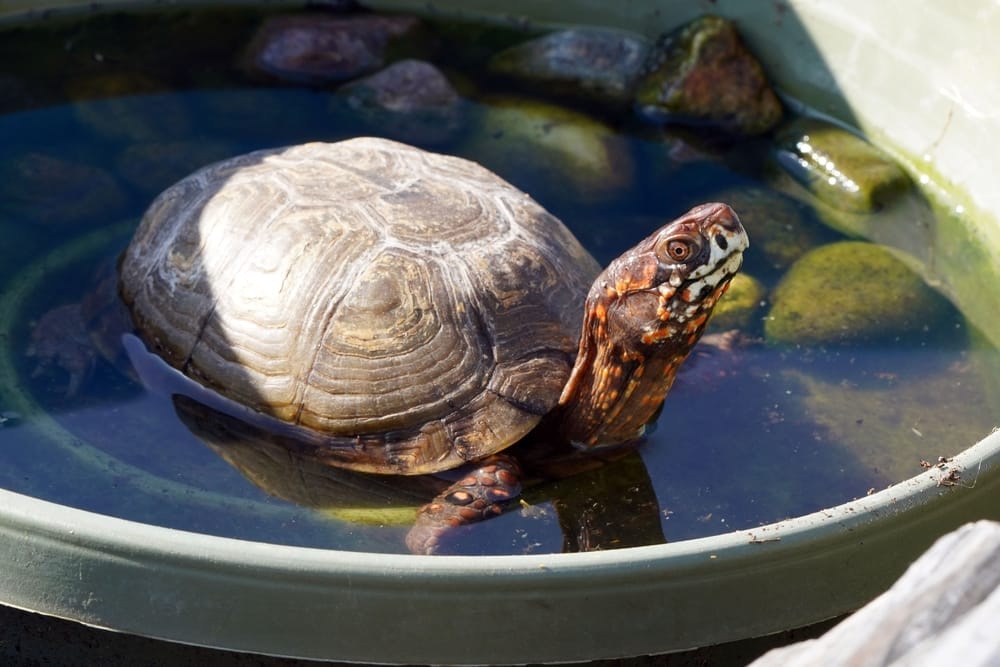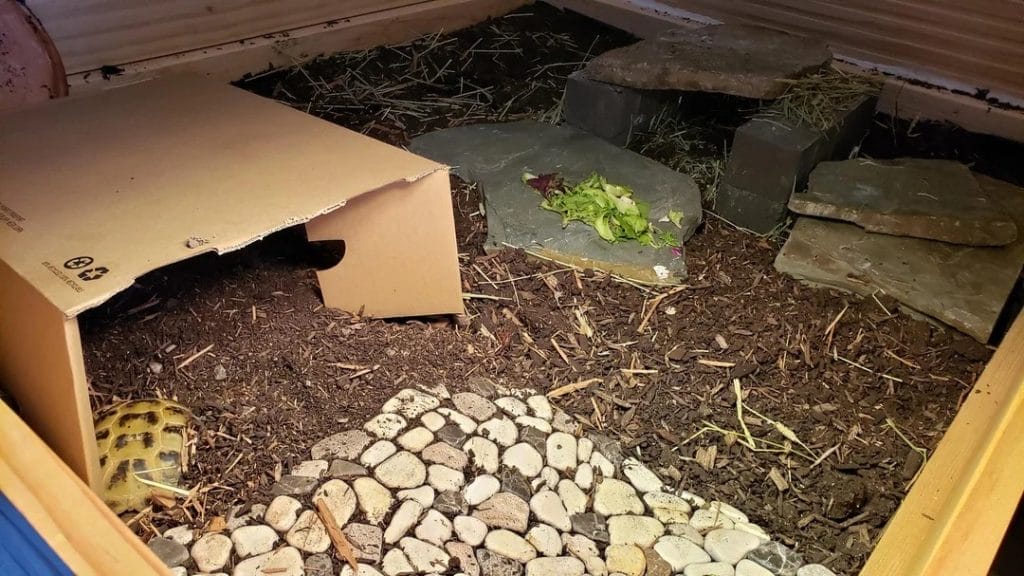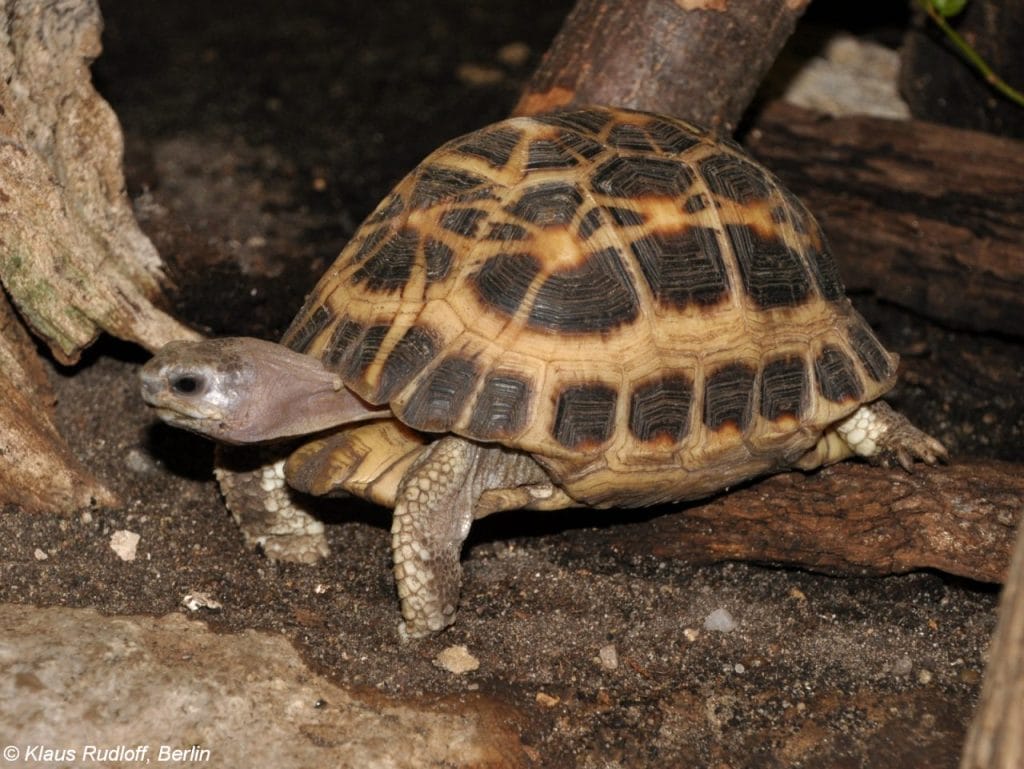Is My Turtle Dead? 7 Signs To Check Right Now
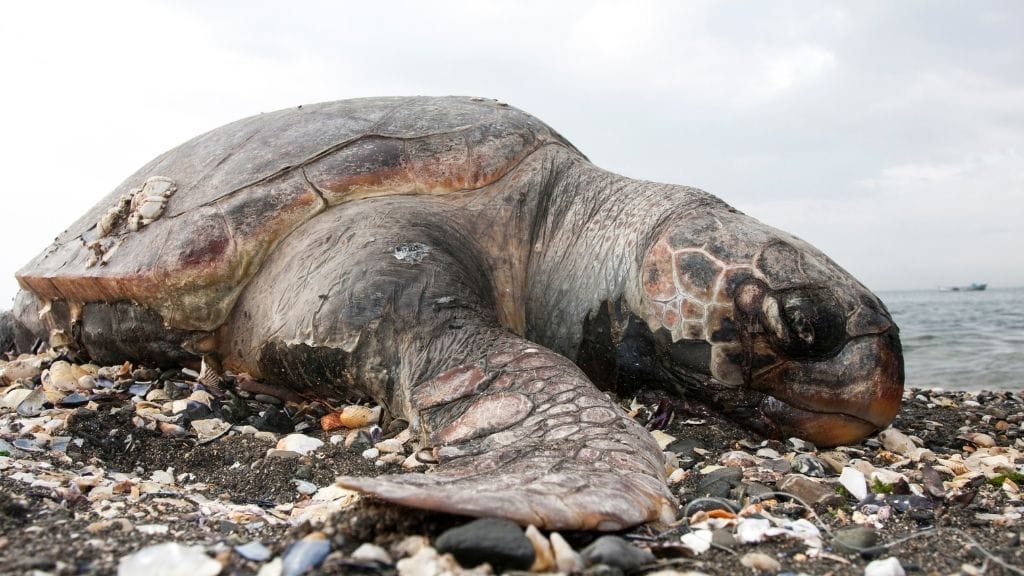
This post was created with help from AI tools and carefully reviewed by a human (Muntaseer Rahman). For more on how we use AI on this site, check out our Editorial Policy.
Finding your turtle motionless and unresponsive is terrifying. If your turtle isn’t moving, check for limb stiffness, body temperature, response to touch, and signs of decomposition like foul odor or sunken eyes to determine if it’s dead or just brumating (hibernating).
Here’s why this matters: turtles enter brumation during cold months, which can look identical to death. Their metabolism slows dramatically, breathing becomes nearly undetectable, and they can stay motionless for months.
In this article, you’ll learn the definitive signs that separate a dead turtle from a brumating one, what to do if you’re unsure, and when to rush to a vet.
Quick Answer: Is Your Turtle Dead or Brumating?
Your turtle is likely ALIVE if:
- Body parts are retracted inside the shell
- Limbs have muscle tone when gently moved
- Shows any response to gentle touch near tail/cloaca
- Eyes appear moist (even if closed)
- No foul smell
Your turtle may be DEAD if:
- Head, legs, and tail are hanging limply outside shell
- Body feels as cold as the surroundings
- Zero response to any stimulation
- Strong decomposition smell
- Eyes deeply sunken, dry, or cloudy
- Presence of flies or maggots
When in doubt: Warm your turtle in room-temperature water for 30-60 minutes and call a reptile vet immediately.
What Does Brumation Look Like?
Before we talk about death, you need to understand brumation.
Brumation is the reptile version of hibernation. It happens when temperatures drop, usually between October and April.
During brumation, your turtle’s body does some wild stuff. Their heart rate can drop from 40 beats per minute to just one beat every 10 minutes.
Their breathing becomes so slow you might need to watch for 10+ minutes to see one breath. Metabolism slows to nearly zero, and they stop eating weeks before entering this state.
This is completely normal and healthy for many turtle species. But if you’ve never seen it before, it looks exactly like death.
This Hilarious Turtle Book Might Know Your Pet Better Than You Do
Let’s be real—most turtle care guides feel like reading a textbook written by a sleep-deprived zookeeper.
This one’s not that.
Told from the snarky point of view of a grumpy, judgmental turtle, 21 Turtle Truths You’ll Never Read in a Care Guide is packed with sarcasm, sass, and surprisingly useful insights.
And hey—you don’t have to commit to the whole thing just yet.
Grab 2 free truths from the ebook and get a taste of what your turtle really thinks about your setup, your food choices, and that weird plastic palm tree.
It’s funny, it’s honest, and if you’ve ever owned a turtle who glares at you like you’re the problem—you’ll feel seen.
The #1 Most Reliable Sign: Body Position
This is the single best indicator, and it works almost every time.
A dead turtle cannot retract into its shell. When a turtle dies, it loses all muscle control.
You’ll see the head hanging limply out of the shell, often to one side. All four legs will be extended or dangling loosely.
The tail will be out and floppy. If you gently lift a leg, it’ll have zero resistance and just hang there like a noodle.
A brumating turtle keeps some muscle control. Even in deep brumation, the turtle can hold its limbs partially retracted.
If you pick up a brumating turtle, the legs won’t swing freely. They’ll have tension, even if slight.
Bottom line: if your turtle is tucked inside its shell, it’s alive. Period.
Check the Temperature
Touch your turtle’s shell and skin.
A brumating turtle feels cool but not ice-cold. They’re a few degrees cooler than normal but still slightly warmer than the environment.
A dead turtle feels exactly as cold as its surroundings. There’s no internal temperature regulation happening anymore.
But here’s the catch: this test alone isn’t reliable. Turtles are cold-blooded, so they naturally match the environment temperature.
Use temperature as a supporting clue, not the main test.
The Touch Test: Check for Response
Gently touch different parts of your turtle’s body and watch carefully.
Try these spots in order:
- Touch the shell (they have nerve endings there)
- Gently tap near the eyes
- Softly touch the feet
- Press very gently around the cloaca (the opening near the tail)
The cloaca is the most sensitive area. Even a deeply brumating turtle might react here when nothing else works.
What you’re looking for: any movement, no matter how slight. A tiny limb twitch. Eyes moving under closed lids. A small shift in position.
A dead turtle shows absolutely zero response. Nothing. Complete stillness no matter what you do.
Look for Breathing
This is tough because brumating turtles breathe so slowly it’s nearly impossible to see.
Hold something light near the nostrils. A feather works great. A small piece of tissue paper also works.
Watch for at least 10 minutes. I’m not kidding about the time.
A brumating turtle might only take one breath every 10-15 minutes. You need patience here.
You can also watch the throat area or the soft skin between the shell and legs. Look for the tiniest movement or pulsing.
No movement after 10-15 minutes of close observation is a bad sign.
Check the Eyes
The eyes tell you a lot, but you need to know what to look for.
Living turtle eyes (even brumating):
- Closed or slightly open
- Appear moist
- Normal position in the socket
- May react to light if you shine a phone flashlight
Dead turtle eyes:
- Deeply sunken into the head
- Dry and cloudy
- Often wide open and glazed
- No reaction to light
Sunken eyes can also mean severe dehydration in a living turtle. If you see sunken eyes but no other death signs, get to a vet immediately.
The Smell Test
Let’s be real: this one’s unpleasant but definitive.
A dead turtle will smell bad. Once decomposition starts, there’s a distinctive foul odor you can’t miss.
How quickly this happens depends on temperature. In warm environments, you might smell it within 24 hours.
In cold environments, it could take several days.
A brumating turtle has no unusual smell. They might smell like their tank water or substrate, but nothing rotten or decaying.
If you smell death, your turtle has passed. I’m sorry.
Look for Flies and Maggots
This is another unpleasant but clear sign.
Flies are attracted to decomposing bodies within hours. If you see flies buzzing around or landing on your turtle, that’s a strong indicator.
Maggots are an even more definitive sign. If you see maggots, your turtle has been dead for at least a day.
There’s one exception: a brumating turtle’s immune system is suppressed. If they have an open wound, it could get infested even while alive.
But a healthy-looking turtle covered in flies? They’ve passed.
Check the Skin and Shell
The appearance changes as decomposition progresses.
Dead turtle skin:
- Shriveled and dried out
- Discolored (pale, grayish, or darker than normal)
- May appear to be rotting
- Soft or mushy in spots
Dead turtle shell:
- May become soft or spongy
- Could show white fungal growth
- Might develop dark spots
Brumating turtle appearance:
- Skin might look slightly dry (that’s dehydration, fixable)
- Shell stays firm and normal-colored
- No signs of decay or rot
What NOT to Do
These are common mistakes that can hurt a living turtle or give you false information.
- Never flip your turtle on its back. This is extremely dangerous for a living turtle. It puts crushing pressure on their lungs and can cause death.
- Some people say to flip them to check for response, but there are safer ways.
- Don’t assume they’re dead based on one sign. You need multiple indicators. A cold, unmoving turtle might just be deeply brumating.
- Don’t wait too long to warm them up. If you suspect brumation but aren’t sure, gentle warming won’t hurt a dead turtle but could save a living one.
- Don’t poke or prod aggressively. Gentle stimulation is enough. Rough handling of a brumating turtle can cause stress or injury.
- Don’t trust the floating test alone. Some people say a dead turtle floats, but that’s unreliable. Sick living turtles can float due to respiratory infections. Dead turtles might sink initially and only float after decomposition gases build up.
The Warming Test: What To Do If You’re Not Sure
If you’ve checked everything and still can’t tell, try warming your turtle.
This is safe to do and can give you a definitive answer.
Here’s how:
- Fill a shallow container with room-temperature water (75-80°F, never hot)
- Water should come halfway up the shell
- Place your turtle in the water
- Wait 30-60 minutes
- Watch closely for any signs of movement
What happens with a living turtle:
- They may start moving within 15-30 minutes
- Could urinate or defecate (that’s good, it means body functions work)
- Might open their eyes
- Could start swimming or walking
- Breathing becomes more visible
What happens with a dead turtle:
- Absolutely nothing
- No response after a full hour
If warming produces no response after 60 minutes, the outlook is grim. Call a reptile vet for confirmation.
When to See a Vet RIGHT NOW
Some situations require immediate professional help.
Call a reptile vet immediately if:
- Your turtle shows signs of illness (discharge, swelling, wounds) but isn’t moving
- You’re unsure after the warming test
- Your turtle was fine yesterday and now seems dead
- You see maggots or signs of rot but want confirmation
- Your turtle is brumating during warm months (that’s abnormal)
- Any doubt whatsoever about their status
Don’t wait. Reptile vets can detect a heartbeat and breathing that you can’t.
They can also treat serious conditions like severe dehydration, respiratory infections, or injuries that make a turtle appear dead.
Time matters. If your turtle is sick and not dead, hours can make the difference.
Understanding Normal Brumation vs. Medical Emergencies
Not all turtle species brumate, and even those that do shouldn’t do it in captivity without preparation.
Turtles that commonly brumate:
- Box turtles
- Red-eared sliders
- Painted turtles
- Map turtles
- Most temperate species
Before brumation, turtles should:
- Stop eating for 2-4 weeks
- Empty their digestive system completely
- Find a sheltered spot
- Gradually become less active
If your turtle suddenly stops moving without this preparation, that’s not normal brumation. That’s a medical emergency.
Indoor pet turtles with stable temperatures shouldn’t brumate at all. If your heated tank turtle suddenly seems dead, don’t assume brumation.
Young turtles under 4 years old shouldn’t brumate. Their bodies aren’t ready for it yet.
What To Do After Confirming Death
I’m truly sorry if you’ve confirmed your turtle has passed.
First, contact your vet even after death. They can confirm and provide cremation services or help with disposal.
Burial options:
- Backyard burial in a deep hole (2-3 feet deep) away from water sources
- Pet cemetery
- Cremation through a vet
If you want to preserve the shell:
- Contact a taxidermist
- It’s a lengthy process taking several months
- The shell must be completely cleaned of all tissue
Check your local regulations. Some areas have specific rules about burying pets.
Never dispose of a turtle in regular trash if you can avoid it. They deserve better.
How To Prevent Confusion in the Future
If your turtle species naturally brumates, work with a vet to do it properly.
Steps for safe brumation:
- Vet checkup before brumation starts (only healthy turtles should brumate)
- Gradually lower temperatures over several weeks
- Stop feeding 2-4 weeks before
- Provide a proper brumation box or area
- Check on them weekly during brumation
- Vet checkup after they wake up
Keep your turtle healthy year-round:
- Maintain proper temperatures (species-specific)
- Provide UVB lighting
- Feed a balanced diet
- Keep water clean
- Annual vet checkups
Healthy turtles are less likely to have medical emergencies that look like death.
Frequently Asked Questions
How long can a turtle stay still during brumation?
Turtles can brumate for 2-4 months depending on the species and temperature. During this time, they might not move at all for weeks. This is completely normal for brumating turtles, but they’ll still show signs of life if you test them properly.
Can a baby turtle brumate?
Baby turtles under 4 years old shouldn’t brumate. Their bodies aren’t developed enough and they need consistent food for growth. If a young turtle appears to be brumating or seems dead, get to a vet immediately. It’s likely illness, not brumation.
Will my turtle come back to life after brumation?
A brumating turtle isn’t dead, so they don’t “come back to life.” They’re in a dormant state. When temperatures warm up naturally in spring, or when you warm them gradually in captivity, they’ll wake up within hours to a few days. If warming produces no response after 60 minutes, they’ve likely passed.
Can I prevent my indoor turtle from brumating?
Yes. Most pet turtles in heated indoor tanks with stable temperatures don’t brumate at all. Keep temperatures consistent year-round (species-appropriate ranges), maintain proper lighting, and continue normal feeding. Your turtle will stay active all year. Some experts actually recommend preventing brumation in captivity unless breeding.
What if my turtle seems dead in summer?
If your turtle appears dead during warm months, it’s almost certainly not brumation. Brumation happens in cold months (October-April typically). A seemingly dead turtle in summer is a medical emergency. They could be suffering from heat stress, dehydration, severe illness, or injury. Get to a reptile vet immediately.
Final Thoughts
Finding your turtle motionless is scary, but now you know what to look for.
Remember the most important sign: a dead turtle cannot retract into its shell. The limbs hang limp and lifeless.
Check multiple signs, not just one. Look at body position, temperature, response to touch, eyes, smell, and breathing.
When in doubt, do the warming test and call a reptile vet.
Turtles can live for decades with proper care. Most of the time, that still turtle is just taking a long winter’s nap, not saying goodbye.
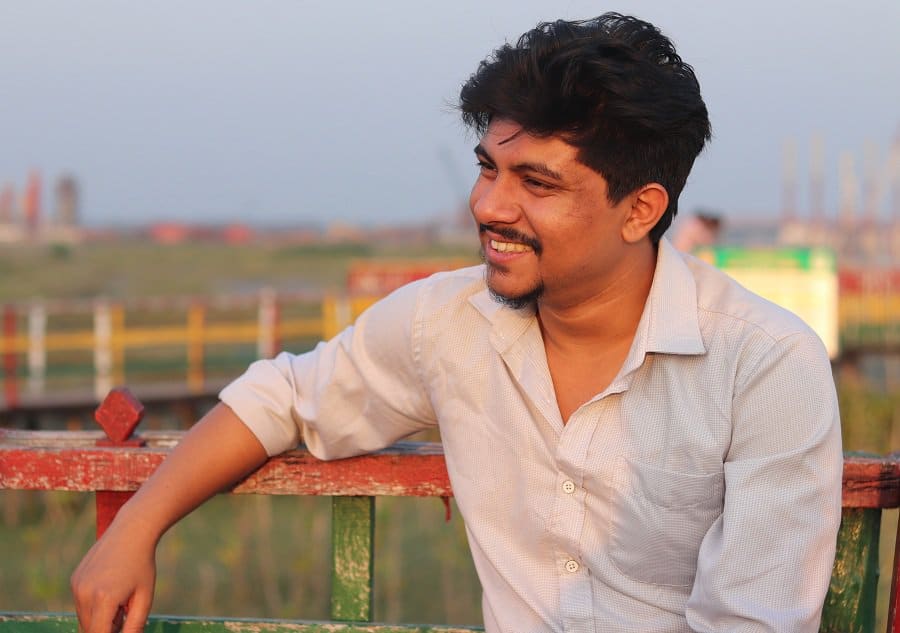
About Author
Muntaseer Rahman started keeping pet turtles back in 2013. He also owns the largest Turtle & Tortoise Facebook community in Bangladesh. These days he is mostly active on Facebook.


